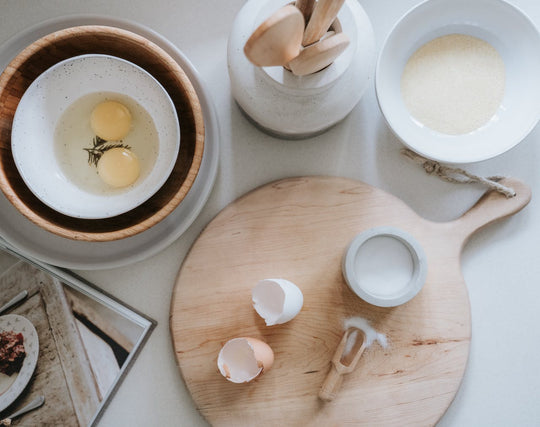A Comprehensive Guide to Choosing the Best Wood for Your Custom Cutting Board
Posted on January 28 2024,

Selecting the perfect wood for your custom cutting board is a crucial step in creating a functional and long-lasting piece that showcases and preserves your cherished family recipes. With several types of wood available, it can be overwhelming to choose the one that suits your taste and requirements the best. In this comprehensive guide, you'll learn about the different types of wood commonly used for custom cutting boards, their unique characteristics, benefits, and maintenance requirements – all essential knowledge for making an informed decision.
By understanding the nuances of each wood type, you can create a personalized cutting board not only tailored to your design preferences but also suited to your practical kitchen needs. With RecipeBoard.com’s high-quality materials and expert craftsmanship, your custom-engraved cutting board will be a beautiful and durable addition to your kitchen, standing the test of time for generations to come.
1. Maple: The Gold Standard in Cutting Board Craftsmanship
Maple is widely regarded as the go-to wood for cutting boards due to its abundance, strength, and durability. Its tight-grained structure offers a smooth cutting surface without compromising on longevity. Additionally, maple wood is known for its outstanding resistance to cuts, scratches, and bacterial growth, making it a highly practical choice for custom cutting boards. When cared for properly, maple cutting boards can last for years without losing their beauty or functionality, making them an excellent investment for your kitchen.
2. Walnut: A Luxurious Choice for Elegant Kitchens
Walnut is prized for its rich, dark color and distinctive grain patterns, making it a visually appealing choice for custom cutting boards. While walnut is a hardwood and offers moderate durability, it tends to be softer than maple, which can result in slightly less resistance to cuts and scratches. However, with proper maintenance, a walnut cutting board can retain its striking appearance and provide many years of use. Its luxurious aesthetic is an excellent choice for those looking to elevate their kitchen's style with a functional yet beautiful cutting board.
3. Cherry: Vibrant Beauty and Moderate Durability
Cherry is a popular wood for custom cutting boards due to its attractive reddish hue and fine grain patterns. It is a moderately hard and dense material, making it a practical choice for daily use in the kitchen. Over time, cherry wood darkens naturally, further enhancing its beauty and visual appeal. While not as hard as maple, cherry offers a good balance between durability and aesthetics, making it a versatile option worth considering when designing your custom cutting board.
4. Hickory: Rustic Charm and Exceptional Strength
Distinctively known for its rustic charm, hickory is a durable wood choice for cutting boards. It is one of the hardest and most robust domestic hardwood options available, making it ideal for those heavy on chopping and cutting. However, its hardness can also be a drawback, as it may dull knives more quickly than softer wood types like walnut or cherry. Nonetheless, this wood's strength, durability, and attractive grain patterns make it a great choice for custom cutting boards with a touch of rustic appeal.
5. Oak: Affordable Durability and Classic Appeal
Oak is an affordable choice for custom cutting boards, offering a classic and familiar appearance due to its widespread use in furniture and home construction. Oak's durability and strength lie between maple and cherry, making it a well-rounded option for many kitchens. However, oak has a more open grain structure, which may require a bit more maintenance to keep the cutting board clean and hygienic. If you're seeking a reliable and budget-friendly option for your custom cutting board without compromising aesthetics, oak might be the perfect choice.
6. Teak: Sustainable Durability with a Tropical Twist
Teak is a tropical hardwood that has gained popularity in recent years due to its sustainability and attractive appearance. Teak wood cutting boards combine durability, ease of maintenance, and resistance to moisture, making them an excellent choice for those seeking a more ecologically friendly wood option. However, teak can be challenging to engrave due to its more oily nature. If you're looking to make a statement with your custom engraved cutting board while supporting sustainable forestry practices, teak could be the ideal option for you.
7. Bamboo: An Eco-friendly Alternative to Hardwood
While technically a grass, bamboo has become a popular eco-conscious alternative to hardwood for cutting boards. Bamboo cutting boards are lightweight, durable, and naturally resistant to water and bacterial growth, making them a practical and low-maintenance option for your custom engraved cutting board. However, bamboo is less forgiving on knives due to its higher silica content, which can lead to faster dulling. If sustainability is a priority for you in creating your custom cutting board, bamboo is a fantastic option to consider.
Each wood type offers its unique blend of aesthetics, durability, and maintenance requirements when crafting custom cutting boards. When determining your ideal choice, consider your design preferences, budget, and daily use habits to ensure your custom cutting board will serve you well for years to come. The expert craftsmen at RecipeBoard.com are well-equipped to work with a variety of woods, ensuring your custom-engraved cutting board offers both style and functionality.
Create Your Perfect Custom Cutting Board with RecipeBoard.com
Choosing the right wood for your custom cutting board is a key factor in ensuring long-lasting beauty, function, and durability. Each wood type has its unique characteristics, benefits, and maintenance requirements to suit various needs, tastes, and budgets.
RecipeBoard.com offers a diverse selection of high-quality wood options for your custom engraved cutting board, ensuring that you can create a truly personalized piece that caters to your design preferences and practical kitchen requirements. Whether you opt for the gold standard of durability in maple, the classic appeal of oak, or the eco-friendly alternative in bamboo, our expert craftsmen will work meticulously to create a cutting board that showcases your cherished family recipes for generations to come.
Now that you're equipped with the knowledge to make an informed decision, it's time to embark on the journey of creating a custom recipe cutting board that reflects your unique culinary heritage. Explore the beautiful wood options available at RecipeBoard.com and begin crafting a timeless, functional, and personalized kitchen keepsake.
